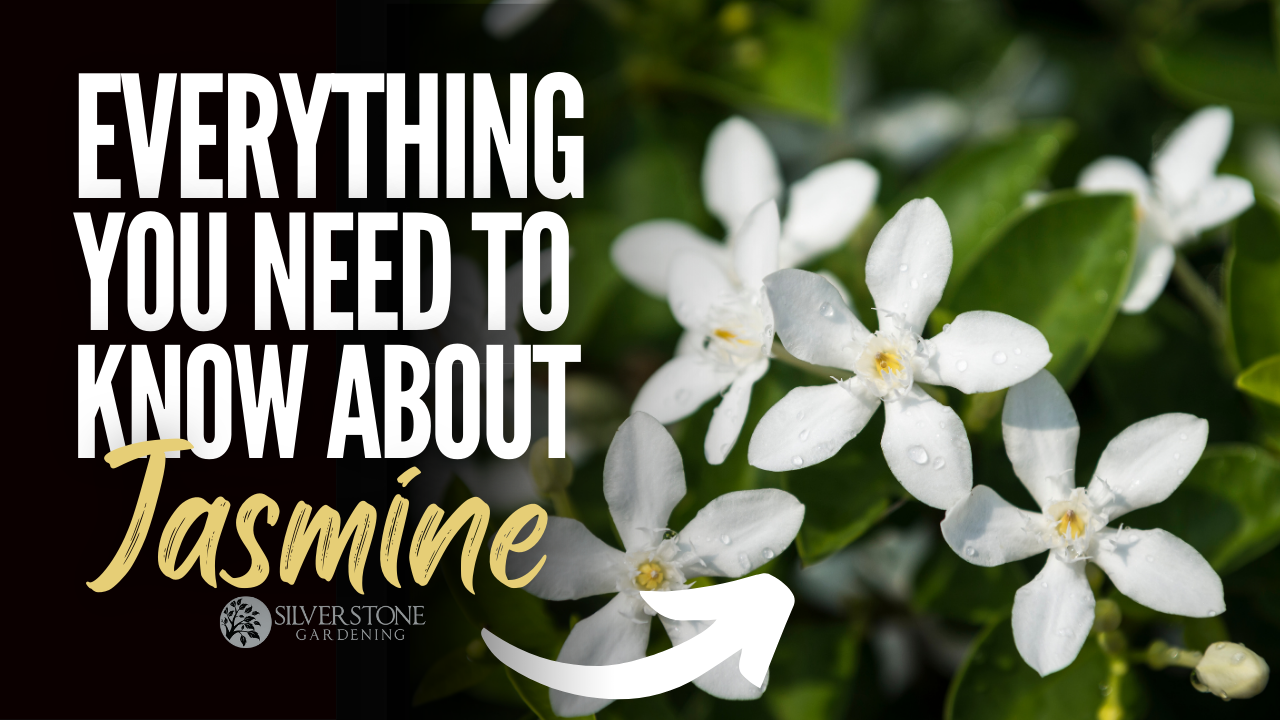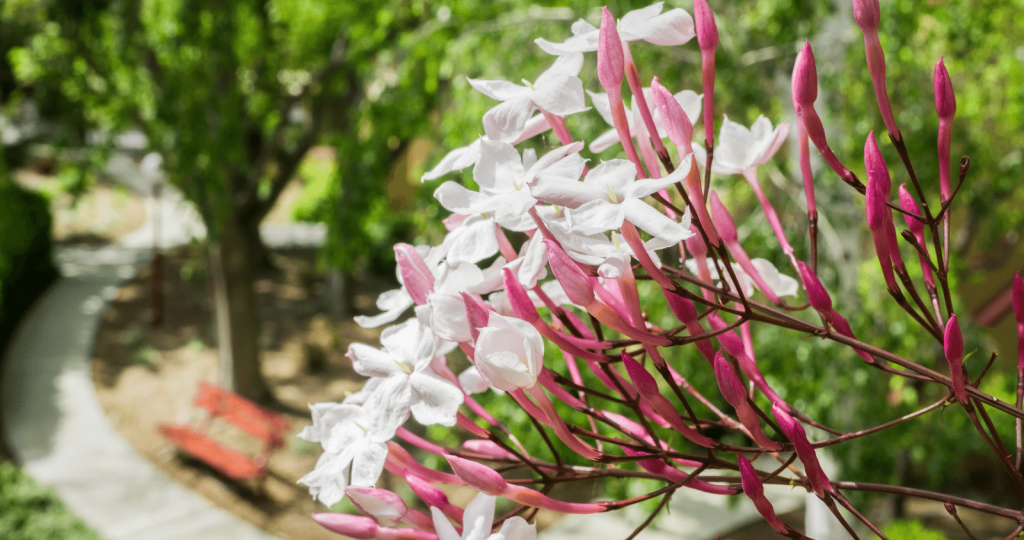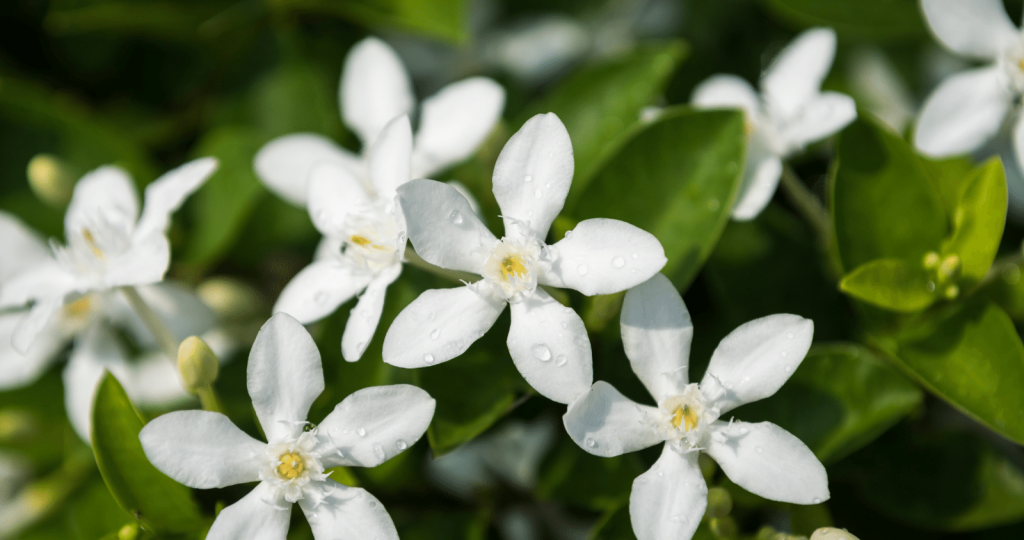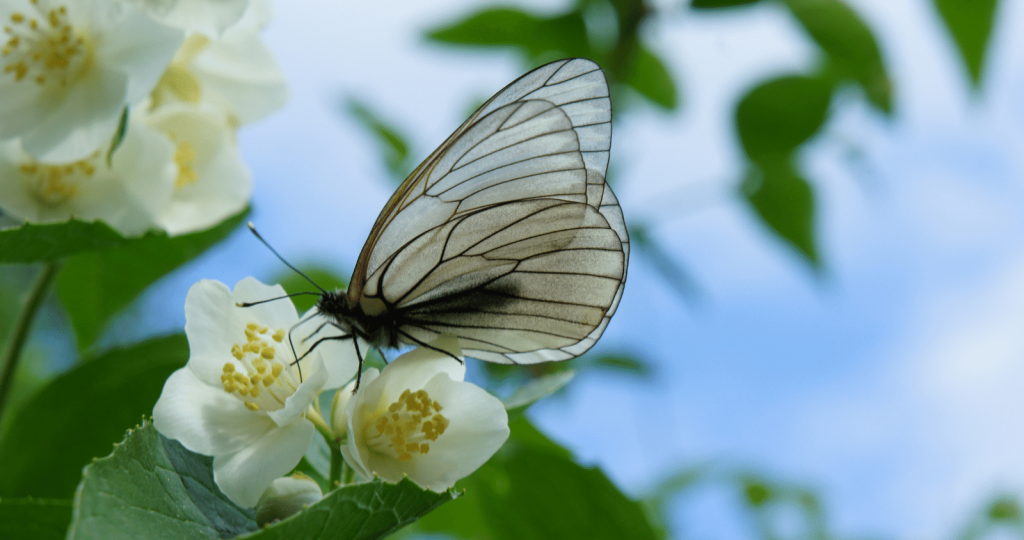
Jasmine, known for its delicate, sweet fragrance and elegant white flowers, is a popular choice for gardens around the world. Not only does jasmine add a beautiful touch to any garden, but its scent also has therapeutic benefits. The fragrance of jasmine is famous for promoting relaxation and reducing stress, making it the perfect addition to create a calming outdoor space. Furthermore, it is a versatile plant that can grow in various climates, making it accessible to gardeners with different environmental conditions. Whether you have a small balcony garden or a spacious backyard, jasmine is sure to enhance the beauty and ambiance of your outdoor oasis. Jasmine is a relatively low-maintenance plant but may benefit from occasional feeding with a balanced fertilizer during the growing season to promote healthy growth and flowering.

Varieties of Jasmine
In Australia, one of the most popular native jasmine species is the Jasminum suavissimum, commonly known as the Australian jasmine. It is a vigorous climber with glossy green leaves and small, fragrant white flowers.
There are over 200 species of jasmine, but some of the most popular varieties include:
- Jasminum officinale (common jasmine), known for its intoxicating scent and ability to attract butterflies and bees
- Jasminum polyanthum (pink jasmine), a fast-growing vine with clusters of pink buds that open to reveal fragrant white flowers. Also known as poet’s jasmine, is a popular choice for gardens and landscapes due to its strong fragrance and delicate white flowers.
- Jasminum sambac (Arabian jasmine), which is native to Southeast Asia. Its small, waxy flowers are highly fragrant and often used in perfumes and teas.
With such a wide variety of jasmine species to choose from, gardeners can find the perfect addition to their garden to enjoy the sweet scent and stunning beauty of this beloved flower.

Jasmine Varieties with the Best Fragrance
One of the most attractive features of jasmine is its intoxicating fragrance. The flowers of jasmine release their scent most strongly in the evening, making them a popular choice for gardens and outdoor spaces. In Australia, some of the best-smelling jasmine varieties include Jasminum polyanthum (pink jasmine) and Jasminum sambac (Arabian jasmine). These varieties not only have a strong and sweet scent, but they also offer beautiful blooms that add a touch of elegance to any garden.
Jasminum polyanthum, also known as pink jasmine, is a vigorous climber that produces clusters of pink, star-shaped flowers. Its fragrance is highly intoxicating, filling the air with a delightful aroma. On the other hand, Jasminum sambac, or Arabian jasmine, is a shrub-like plant with white, waxy flowers that emit a rich and exotic scent. Gardeners often choose this variety for its versatility, as it can grow as a shrub, climber, or even as a potted plant.

Ideal Growing Conditions
Jasmine thrives in well-draining, slightly acidic soil (to find out what your soil PH is use this kit). It prefers full sun to partial shade and requires a minimum of four to six hours of sunlight each day. This flowering plant is sensitive to extreme weather conditions and prefers mild temperatures. It can tolerate drought once established, but regular watering is recommended, especially during dry periods.
The Best Places to Plant Your Jasmine
This plant thrives in Australia’s climate, preferring full sun to partial shade and well-draining soil. It can grow in pots or containers, making it a versatile plant for gardens, balconies, and patios. This can also grow indoors in Australia, provided it receives adequate sunlight and regular watering.
How much light do jasmine need to thrive?
Jasmine needs at least four to six hours of sunlight each day. Insufficient sunlight can result in leggy growth, reduced flowering, and overall poor plant health. If your flower is not getting enough light, you may notice sparse foliage, weak growth, and a lack of flowering.

How much water do jasmine need per week?
While considered moderately drought tolerant once established, it still requires regular watering, especially during hot, dry periods. On average, it needs about 20-30mm of water per week. However, this can vary depending on the climate and soil conditions.
Do you need to prune jasmine?
Yes, Jasmine respond well to pruining. You should prune regularly to maintain its shape and encourage flowering. It is best to prune it after it has finished flowering, usually in late spring or early summer. You can use sharp pruning shears (if you are looking for some really good shears, here are two great options depending on your budget: option 1 and option 2), a hedge trimmer or seceatuers to prune a jasmine, cutting back any dead or overgrown branches to promote new growth.
How Quickly Will Jasmine Grow?
This plant can grow quickly, especially in the right conditions. They can reach their full height of around 2-3 meters in just a few years. On average, it can grow up to 30-60 centimeters per year, depending on the variety and growing conditions.
You can encourage faster growth with regular water, and fertilisation.

What soil is best for jasmine?
Jasmine plants prefer well-draining soil that is rich in organic matter. It can also tolerate a variety of soil types, including sandy, loamy, and clay soils. However, the addition of organic matter, such as compost or aged manure, can help improve soil structure and fertility, leading to even faster growth. Adding mulch around the base of the plant can also help retain moisture and suppress weed growth, further aiding in the plant’s rapid growth. Regular watering and fertilizing can also promote healthy growth and vibrant blooms.
- If your soil is too sandy, you can improve it by adding compost or well-rotted manure to increase its water retention and nutrient content. If you just need a small amount of compost, this is a great option; if you need a larger quantity, the best option is to contact your local soil supplier.
- If your soil has too much clay, you can improve it by adding organic matter, such as compost, to improve drainage and aeration.

Do you need to fertilise jasmine?
If you have a healthy soil rich in organic matter then you will most likely not need any additional fertiliser, unless your goal is to promote faster growth.
However, if you have poor-quality, sandy soils, then it will be beneficial to fertilise regularly, as this will promote healthy growth and flowering.
Use a balanced fertiliser for jasmine. Here is a great balanced organic fertiliser that can be used on just about every plant. Apply fertiliser in early spring before new growth appears and again in midsummer to encourage flowering. Follow the product label to avoid over-fertilising, as this can lead to excessive foliage growth at the expense of flowers.
Propagating Jasmine
Jasmine is generally considered easy to propagate, especially using the semi-hardwood cutting method. With proper care and attention, cuttings can quickly develop roots and grow into healthy plants. You can propagate this flowering plant through several methods. The most common method of propagating it is by using semi-hardwood cuttings. This method is simple and effective, producing new plants that are genetically identical to the parent plant.

Using Semi-Hardwood Cuttings
One common method is through stem cuttings or semi-hardwood cuttings. Healthy, mature plants can produce stem cuttings or semi-hardwood cuttings. When taking a 4-6 inch cutting from a healthy, mature plant, ensure that you remove any leaves from the bottom half of the cutting. After dipping the cut end in rooting hormone, plant it in a well-draining potting mix. We recommend using this rooting hormone to help root formation in your cuttings. Remember to keep the cutting moist and in a warm, sunny location until roots develop.
Layering
Another method of propagation is through layering, where a low-growing branch is bent down and buried in soil, allowing it to develop roots. Once roots have formed, the new plant can be separated from the parent plant and potted up. Layering allows the new plant to establish a strong root system while still receiving nutrients from the parent plant. It is important to keep the soil around the layered branch consistently moist to encourage root development. After a few weeks, when the new plant has developed a healthy root system, it can be carefully separated from the parent plant and transplanted into its own pot.
Pollination of Jasmine
Jasmine plants rely on pollination by bees, butterflies, moths, and other insects. These pollinators transfer pollen between flowers, leading to fertilisation and seed production. Once pollinated, its flowers develop into small fruits known as berries, containing seeds dispersed by birds, animals, wind, or cultivation by cuttings. Pollination and dispersal are crucial for the reproduction and propagation of jasmine plants, ensuring their presence and diversity in nature.

Common Pests and Diseases
Regularly inspecting the plants for any signs of infestation or disease is crucial in preventing their spread. In the event of an infestation, using organic insecticides or soapy water can help control the pests. Additionally, providing proper air circulation and avoiding overwatering can help prevent the occurrence of fungal diseases. By being vigilant and taking necessary precautions, layered plants can thrive and grow into healthy individuals.
Pests
Common pests that can affect jasmine include aphids, spider mites, and whiteflies. These pests can cause damage to the leaves and flowers of the plant, leading to stunted growth and decreased flowering. To control these pests, it is important to regularly inspect the plant for any signs of infestation and take immediate action. This can include spraying the plant with an organic insecticide or using natural predators, such as ladybugs, to control the pest population. Additionally, proper care and maintenance, such as regular pruning and providing adequate sunlight and water, can help prevent pest infestations.
Diseases
While jasmine plants are generally resilient and resistant to diseases, they can still be susceptible to certain fungal and bacterial infections. Common diseases that can affect this plant include powdery mildew, leaf spot, and root rot. These diseases can cause discoloration, wilting, and decay of the plant. To prevent and control these diseases, it is important to maintain good hygiene practices, such as removing any fallen leaves or debris from the plant’s surroundings and avoiding overwatering. Additionally, applying a fungicide (here is an organic fungicide that will help with powdery mildew and black spot) or using natural remedies, such as neem oil (here is where you can find some neem oil), can help control and prevent the spread of diseases. These pests can be treated with insecticidal soap or neem oil.

Common Mistakes
Jasmine plants can face challenges that lead to issues such as dying or a lack of flowers. Common reasons include improper watering, poor soil conditions, lack of sunlight, nutrient deficiencies, and pests or diseases. To address these issues, ensure your jasmine is watered properly, has well-draining soil enriched with organic matter, receives adequate sunlight, is fertilised regularly, and is checked for pests and diseases.
The three most common mistakes gardeners make with jasmine are:
- Overwatering: Jasmine prefers slightly moist soil, not waterlogged conditions.
- Insufficient sunlight: Jasmine needs adequate sunlight to thrive and flower.
- Neglecting pruning: Regular pruning is essential to maintain the health and shape of jasmine plants.
By providing jasmine with the right growing conditions, including sunlight, water, and soil, you can enjoy the beauty and fragrance of this lovely plant in your garden.
Encouraging Blooming
Pruning after flowering can also help maintain its shape and encourage new growth and blooming. To encourage blooming, provide the right conditions such as proper pruning, fertilization, sunlight exposure, and watering.
Promoting Thicker Growth
For thicker growth, prune regularly to promote branching, fertilize to provide essential nutrients, ensure adequate watering, provide sufficient sunlight, and offer support if growing as a climber. By addressing these factors, you can help your plant thrive and bloom beautifully.

Symbolism of Jasmine
Jasmine is often associated with love, beauty, and purity. Its delicate white flowers and sweet fragrance symbolize purity of heart, love, and sensuality in some cultures. In others, jasmine symbolizes grace, elegance, and positivity.
Jasmine in Mythology
In Hindu mythology, jasmine is associated with the god Vishnu, who is often depicted adorned with jasmine garlands. Jasmine is considered sacred to Vishnu and is used in religious ceremonies and rituals.
Gift of God
Jasmine is also considered a gift from the gods in many cultures. Its beauty and intoxicating scent are often seen as a divine offering, bringing joy and happiness to those who encounter it. In Greek mythology, it is believed that the god Apollo created the jasmine flower as a symbol of beauty and elegance. In ancient China, jasmine was seen as a symbol of good luck and prosperity, and it was often given as a gift to bring blessings and fortune to loved ones. The significance of jasmine in various mythologies and cultures highlights its universal appeal and the deep-rooted symbolism it holds.
Benefits and Uses
In addition to its beauty and fragrance, jasmine is also believed to have several medicinal properties. It is used in aromatherapy for its calming and relaxing effects and is also used in traditional medicine to treat various ailments. In the garden, jasmine is often used as a natural air freshener and insect repellent.
Jasmine is a beautiful and fragrant addition to any garden in Australia. With its rapid growth, lovely fragrance, and easy propagation, it is a popular choice for both beginner and experienced gardeners alike. By providing your plant with the right growing conditions and care, you can enjoy its beauty and fragrance for years to come.

Why Jasmine Smells Good
Jasmine’s delightful fragrance comes from its flowers, which contain aromatic compounds such as benzyl acetate, linalool, and benzyl alcohol. These compounds give jasmine its sweet, floral scent, which is often described as exotic and intoxicating.
Preference among Men
The appeal of jasmine’s scent is subjective and can vary among individuals. However, jasmine is generally regarded as a pleasant fragrance and is often used in perfumery for its floral and exotic notes. Many people, including men, find the scent of jasmine appealing and captivating.
Non-fragrant Jasmine Varieties
While most jasmine varieties are known for their fragrant flowers, there are some varieties, such as Jasminum nudiflorum (winter jasmine), that are not known for their scent. These varieties are valued for their ornamental qualities, such as their bright yellow flowers and hardy nature, rather than their fragrance.
